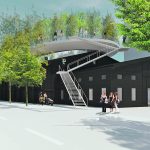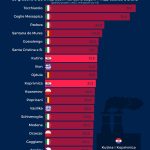
September 14, 2020 – After NEMO (Network of European Museum Organizations) published the conclusions of a study in May on the impact of COVID on museums, it was predicted that there would be a “long-term dramatic decline in revenue” until the end of 2020. A look at how museums in Croatia are coping.
HRTurizam reports that when museums began to open and tourists arrived at the beginning of the summer, there was hope that the drop in visits would not be as significant as predicted. Although cultural tourism accounts for 40% of the tourism in Europe, a certain positive trend of tourist arrivals did not affect the number of visitors to museums. Namely, only in July and August in Croatia, was there a drop in visitors of 79.18 percent.
The Museum Documentation Center (MDC) conducted a survey on a sample of the most visited Croatian museums, among which those that traditionally bring the largest number of foreign tourists in the summer stand out. In the first wave of the pandemic, many museums reported revenue losses ranging from 75 to 80%. According to the MDC, large museums and those located in tourist areas counted losses in the hundreds of thousands of euro a week.
According to the annual statistics collected and analyzed by MDC in recent years, the Archaeological Museum of Istria in Pula and the Split City Museum are the most frequently visited among the top five most visited Croatian museums, under which our most attractive ancient monuments are the Arena and Diocletian’s Cellars, the Dubrovnik Museums, and in Zagreb, Klovićevi dvori and the Museum of Broken Relationships. The Nikola Tesla Technical Museum and the Museums of Hrvatsko Zagorje are also very popular, but foreign tourists do not make up most of the audience.
Although only at the beginning of 2021, when we collect statistical data for the whole of 2020 from all museums in the Republic of Croatia, will we be able to determine the dimensions of the number of visitors accurately. A decline of 79.18 percent was recorded on visits to these five museum houses in July and August according to the survey.
Dubrovnik museums in July and August 2019 had 84,480 visitors, and this year 18,197 or a minus of 78.4%. Last year, the Split City Museum recorded 99,761 visitors in the middle of the season, and in 2020, 15,589 or a drop of 84.3%. The Archaeological Museum of Istria, the absolute champion of attendance for years, lost 55.6% of visits this summer and fell in the summer months from 247,344 to 109,687.
Klovićevi dvori Gallery, although collectively recording an increase of 13% from 17,555 to 19,861 visitors, in its comprehensive report explains that 17,000 visitors were “earned” by the changes caused by the pandemic and earthquake, moving the Baš Naš festival from June to July and bringing back the outdoor spaces Večeri na Griču and the Summer Stage Amadeo. When you look at visits to the exhibitions in Klovićevi dvori and Kula Lotrščak, you can see that visits dropped from 16,555 last summer to 1,361 this season.
A good indicator is Zagreb’s globally most popular Museum of Broken Relationships, where COVID ate 85.9% of visitors. Namely, last year’s 34,045 visitors in July and August fell to 4,788, which is not surprising because a comparison of Croatian Tourist Board data shows that in July 2020, the city of Zagreb recorded a decrease of 76% in tourist arrivals compared to the same month last year.
What this decline means to those museums that make serious money on tickets is best shown by the data provided to MDC by Darko Komšo, director of the Archaeological Museum of Istria. This museum earned HRK 8.4 million on tickets at all its sites last summer in July and August, and HRK 4.5 million in the same period this year. The loss of almost four million means that this agile museum lost almost 150 thousand euro every week this summer. The data will be even grimmer at the end of the year because the season is over, COVID is unfortunately not, school visits and excursions are on hold, and most of Zagreb’s museums remain closed.
Croatian museums, like those around the world, have been hit by an unprecedented crisis.
For the latest travel info, bookmark our main travel info article, which is updated daily.
Read the Croatian Travel Update in your language – now available in 24 languages
Join the Total Croatia Travel INFO Viber community.











